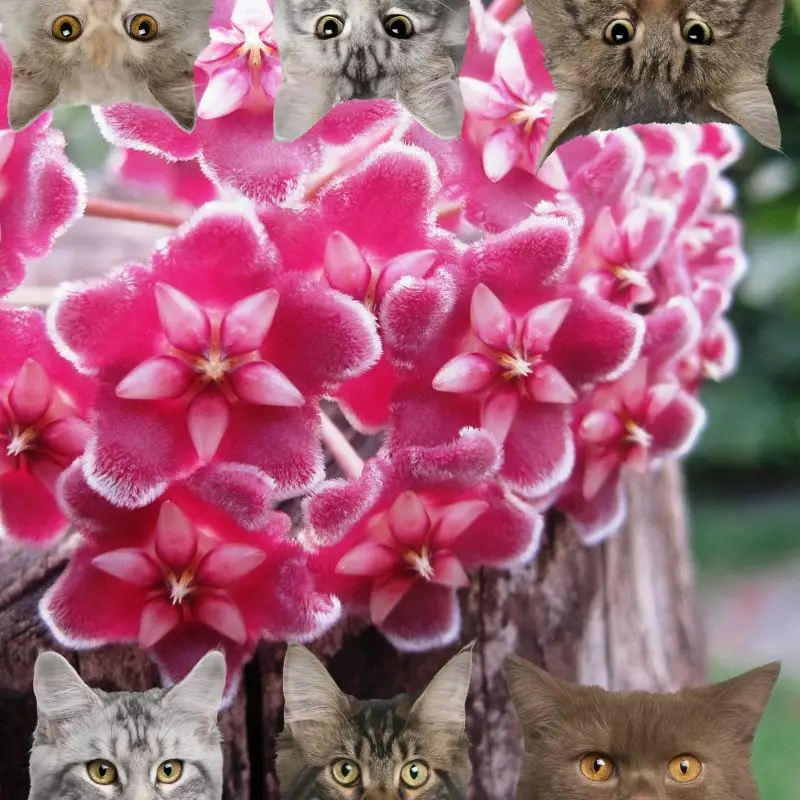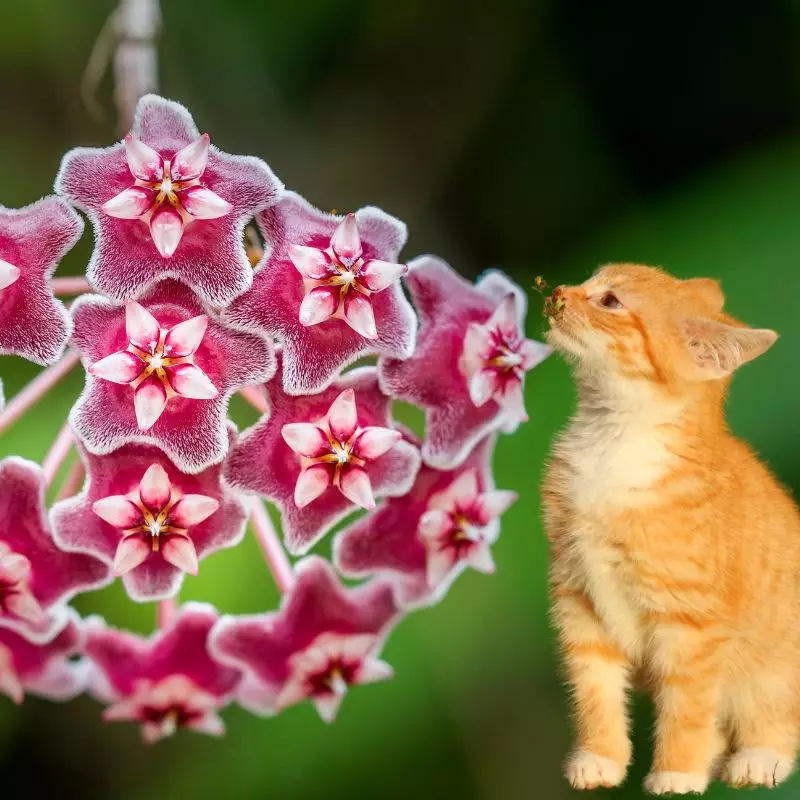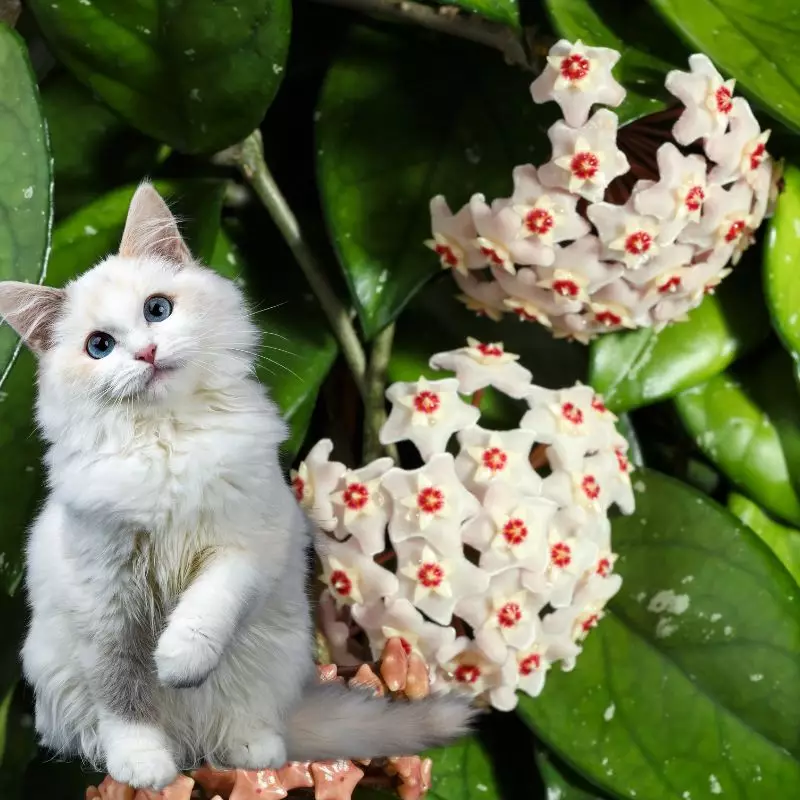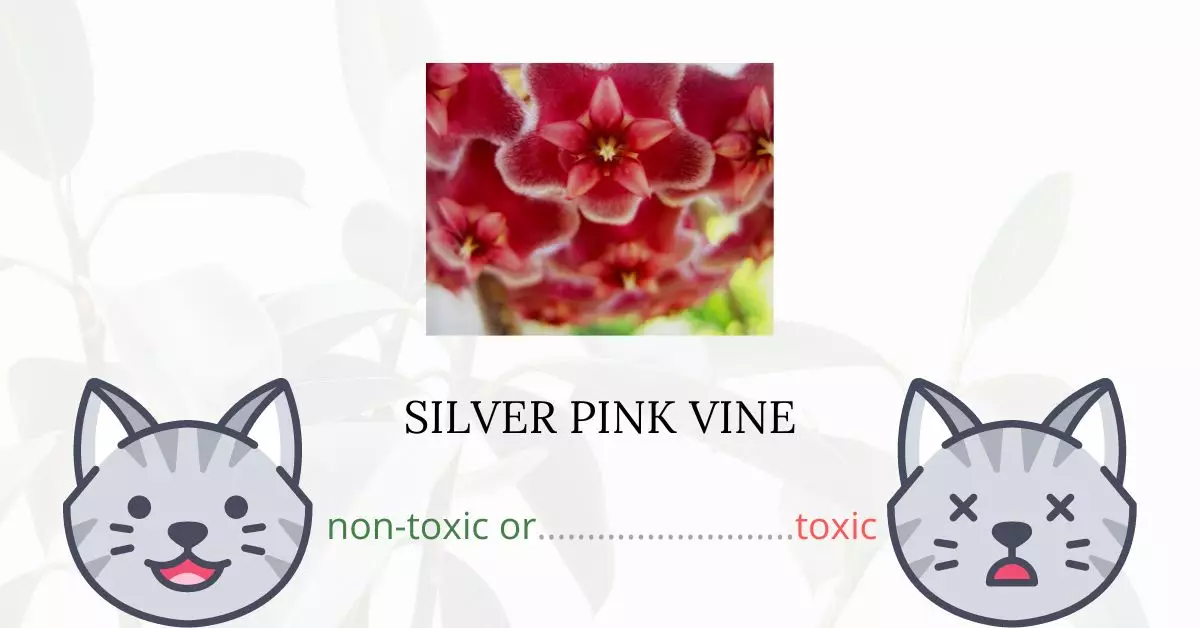No, the Silver Pink Vine is not toxic for cats. However, it’s essential to understand that while the Silver Pink Vine does not contain any substances that are inherently poisonous to cats, consumption of any plant may have varied effects on individual pets.
This article is the result of collaboration with a team of experienced DVMs (doctors of veterinary medicine). Their invaluable insights allow us to provide accurate and up-to-date information regarding the potential risks of various plants, including the Silver Pink Vine, and their effects on cats. In addition to our team’s expertise, we have also cross-referenced our findings with high-authority websites like ASPCA and PetMD to ensure comprehensive and accurate information.
Can Cats Eat Silver Pink Vine?

Silver pink vine is not advisable for cat consumption. Though, having a small bite of this plant will not cause endanger them.
Our feline companions are carnivorous species. Thus, they feed on a meat-based diet and plants are not suitable to be included in their meal. Overeating plant materials will cause cats to have indigestion. This is because they lack the enzymes to fully digest plants.
Indigestion may induce symptoms of vomiting and diarrhea. Once the plant materials are out of their bodies, the symptoms will eventually go away.
What is Silver Pink Vine?

Scientifically known as Hoya Pubicalyx, the silver pink vine is a flowering climber in the Apocynaceae family. It is a succulent vine native to the Philippines with lovely fragrant star-shaped flowers.
The silver pink vine flowers have a pleasant scent that is particularly noticeable at night. To protect young or soft leaves from intense light, the silver pink vine produces a natural plant pigment called “Anthocyanin.” This pigment is also found in mature or old leaves, which it protects them from cold and harsh light.
The average mature silver pink vine stands 8 to 10 feet (3 m) tall. The leaves are narrow, measuring 5 to 12 cm in length and 6 cm in width. Because of its thick, glossy leaves, this plant is also known as a wax plant. The silver pink vine looks beautiful in hanging baskets or terrestrial pots.
Keeping Cats Away From Silver Pink Vine

Moving your plants to a safer area is the simplest way to keep them secure. Keep the plants in a spot that your cat can’t access or can’t reach to shield them from your cat’s playful paws and hungry mouth.
Cats can be taught to avoid plants. Half-fill a spray bottle with tap water, then turn up the stream’s intensity. Give your cat a quick water spray the next time he tries to get into your plants.
You can water a plant while protecting it from your cat’s paws by covering the dirt with rocks. For a more decorative touch, substitute dried wood or seashells for the rocks. You can also try using pine cones, whose smell and texture can deter cats from the plant.
Plants to Avoid For Your Cats
If you are a cat owner and unsure if the plants growing in your yard are harmful to your cats, check out this list of toxic plants for cats. You can also check our list of non-toxic plants for cats.





